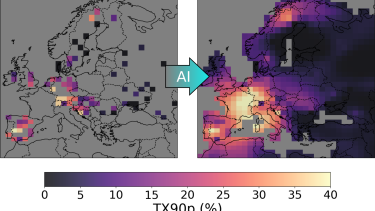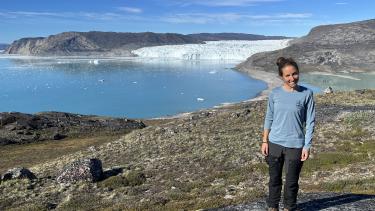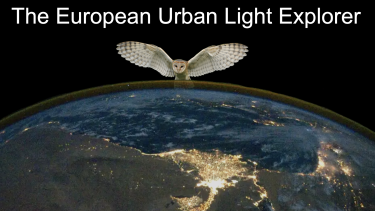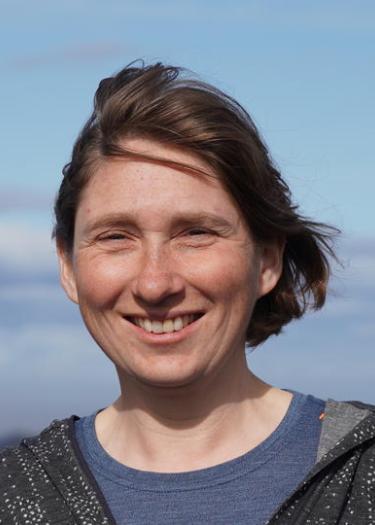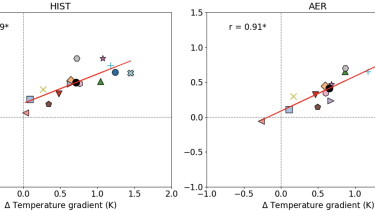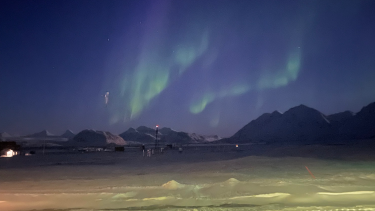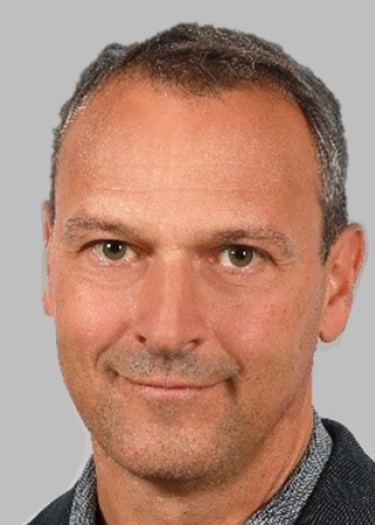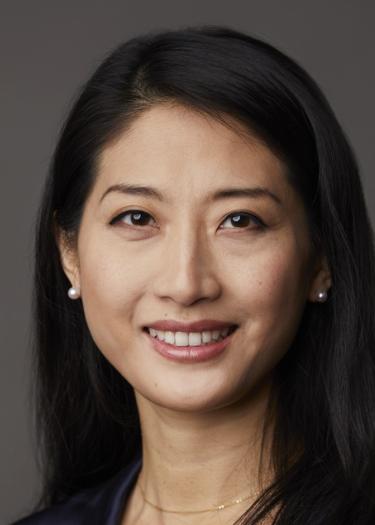Colloquium
Welcome to our colloquium.
Every semester we have fantastic new science on the physics of our environment presented by national and international guests and including our institutes achievements by talks from doctoral students and postdocs. We are looking forward to meet you at the IUP 1. Floor Seminar Room 108/110. Every Thursday at 11:15 during the Semester. Find the list of speakers below.
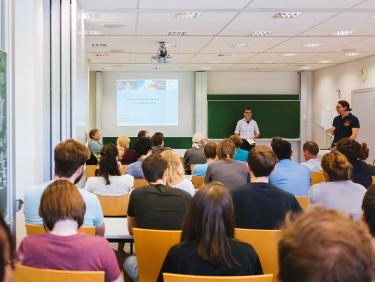
Colloquium WS 25/26
Table filters
Table
30.10.2025 | Dr. Raymond Leibensperger | Making a Splash: Characterizing Sea Spray Aerosol Emissions Using the Scripps Ocean-Atmosphere Research Simulator (SOARS) | Covering 71% of the planet, oceans emit sea spray aerosols (SSA). Produced from wind-wave interactions, SSA are responsible for seeding clouds, acting as ice nuclei, and interact with radiation to regulate our climate. Despite being produced over most of the planet, their climate impacts remain poorly characterized. In this 5-part study, SSA production processes are investigated under realistic, yet highly controlled, laboratory conditions using the Scripps Ocean-Atmosphere Research Simulator (SOARS). SOARS is a unique instrument recreating the ocean-atmosphere interface in the laboratory. In this talk, I will characterize how SSA emissions are simulated in global climate models, describe a novel instrument to replicate surface ocean conditions in the laboratory, document how to measure SSA using this new instrument, integrate novel measurements of SSA emissions into a climate model, and quantify the role of sea surface temperature in determining SSA emissions. | |
06.11.2025 | Dr. Alon Azoulay | Advancements and Challenges in Volcanic Ash Detection and Classification Using Satellite UV/VIS Measurements and Deep Learning | Volcanic eruptions can impact human populations and the environment, with volcanic ash affecting air quality, agriculture, and aviation. Satellite observations for monitoring volcanic ash may face challenges, including difficulties in distinguishing ash from other aerosols, limited coverage, and sensitivity to weather conditions. This study explores a new method that uses deep learning to analyze Ultraviolet (UV) and visible (VIS) satellite data for detecting and classifying volcanic ash in the atmosphere. Neural network classifiers and parameter estimators were trained on simulated data from a radiative transfer model, covering diverse atmospheric conditions, and applied to spectral measurements from the TROPOspheric Monitoring Instrument (TROPOMI) aboard the Sentinel-5p satellite. The results suggest that volcanic ash can be distinguished from other aerosols and no aerosols with over 90% accuracy in the test dataset. | |
13.11.2025 | Dr. Étienne Plésiat | Deep Learning Approaches to Filling Gaps in Observational Climate Datasets | Accurate observational climate records are fundamental for understanding past climate variability, addressing future climate challenges, and informing adaptation strategies. However, these datasets — especially older records — frequently contain missing values, reducing their utility for climate analysis. While statistical interpolation methods, such as Kriging, are commonly used to fill these gaps, they often fail to capture complex climatic patterns. This study evaluates deep learning approaches for reconstructing two monthly observational datasets: an intermediate HadEX3 product (referred to as "HadEX-CAM"), which includes temperature-derived extreme indices, and the GPCC Full Data Monthly Product, providing global precipitation fields. To this end, we implemented and assessed different deep learning architectures based on U-Net, diffusion models, and graph neural networks. | |
20.11.2025 | Dr. Julia Gottschall | Measuring Offshore Wind Resources from Ships (and Buoys) | The exploitation of wind energy as a renewable energy heavily depends on the accurate and precise characterization of prevailing wind velocities and available resources. Wind lidar has become the standard wind measurement technology in the wind industry in recent years, but offshore measurements are still relatively rare. As a supplement to buoy-based measurements, the application from ships travelling over large distances comes with the advantage that large areas can be covered and wind resources be determined. The presentation will give an overview of past campaigns and applications in which we have not only demonstrated the general measurement concept, but have already validated both mesoscale models and the reconstruction of wind data from satellite measurements. The talk will also discuss the accuracy of ship-based measurements in the wind energy context and the application in large-scale atmospheric experiments. | |
27.11.20205 | Prof. Dr. Heather Stoll | Were all past AMOC weakenings really triggered by freshwater hosing? | Models show that freshening in the North Atlantic can trigger AMOC collapse, but were all past AMOC weakenings triggered by freshwater? I will share new, decadally resolved stalagmite isotope records from coastal caves in NW Iberia spanning the last 200 ky, which provide paired indicators of Atlantic freshening and abrupt temperature change. These records elucidate if freshwater was a trigger or conditioner for all past AMOC weakenings and if the recovery of AMOC was coincident with the reducing in freshwater. Stalagmite records also indicate a more dynamic precessional forcing of Northern Hemisphere ice sheets. Finally, using deep time orbitally resolved CO2 records, I will compare the CO2 forcing of the Oligocene-Miocene cryosphere with that of the late Pleistocene. | |
04.12.2025 | Dr. Justin Shenolikar | Charting the course: Europe’s Earth Observing journey through time, in space | Europe, through its space agencies ESA and EUMETSAT, has been a spacefaring power for more than half a century. Its space story is one of remarkable cooperation: missions to space represent an enormous investment and are some of the biggest collaborative projects in the world. A world leader in Earth Observation – the planning, building and operating of meteorological satellites – for over 50 years, through changing economic and political landscapes, Europe has continued to push boundaries, facilitating cutting-edge technological innovations. This continues to the present day with the successful launches of the MTG and EPS-SG missions. In this talk, we examine the history satellite planning in Europe, and how it has changed over the years. We will explore how today’s technological and economic realities are shaping the space industry and the impacts on how we will plan the satellite programmes of the future. | |
11.12.2025 | Dr. Yuanxu Dong | The role of bubbles in air-sea gas exchange | Air-sea gas exchange regulates the global cycles of climatically and biologically important gases such as CO2, CH4, N2O, O2, and DMS. For example, the ocean absorbs approximately 25% of anthropogenic CO2 through air-sea gas exchange, effectively mitigating global warming. This exchange occurs through two pathways: interfacial transfer across the sea surface and bubble-mediated transfer driven by wave breaking. The former is independent of gas solubility and symmetric between invasion and evasion, while the latter depends on solubility and asymmetric (favors invasion). Current flux estimates in data products and Earth System Models often underrepresent the bubble process, without considering the solubility dependence and the asymmetric transfer effect. Because solubilities of the gases mentioned above span several orders of magnitude, such underrepresentation may bias air-sea fluxes and climate projections. This talk reviews advances in understanding bubble-mediated gas exchange from theory, laboratory, field, and modeling perspectives, highlights key knowledge gaps, and presents recent high-wind experiments conducted in the Aeolotron. | |
18.12.2025 | Dr. Jarmon Kikstra | How are emissions scenarios for CMIP7 cooked up? A look in the kitchen | Scenarios are a central tool in climate change research, enabling exploration of the future evolution of the Earth system, climate impacts, and societal responses. In this presentation, I will present what science is behind the creation of the emissions scenarios developed to support the ScenarioMIP experiment within CMIP7. The talk will cover the design of the scenario set (what science, policymakers, plausible range) and the related community process, the quantification of the global/regional sectoral information (e.g., energy and land across sectors) using integrated assessment models (IAMs), how this relates to the Shared Socioeconomic Pathways (SSPs), and how the emissions data of these scenarios is prepared for input to Earth system models (ESMs). | |
08.01.2025 | Prof. Dr. Daniela Domeisen | Extreme weather events driven by the stratosphere | The stratosphere, the atmospheric layer between about 10 to 50km above the Earth’s surface, can strongly influence weather at the surface. In particular, extreme stratospheric events tend to be followed by persistent weather anomalies associated with a shift in the storm track. These anomalies can lead to a wide range of extreme weather events including storm clustering, cold spells, dust outbreaks, as well as compound extremes. While the long-lived stratospheric signals provide an opportunity for the extended-range prediction of extreme weather events, it remains unclear how the coupling between the stratosphere and the surface may change under climate change. This contribution will provide an overview of the history and future of vertical atmospheric coupling and its impacts on the prediction of extreme weather. | |
15.01.2025 | Dr. Stéphane Affolter | |||
22.01.2025 | Dr. Sreerekha Thonipparambil | |||
29.01.2025 | Lukas Pilz | |||
05.02.2025 | Prof. Dr. Ribana Roscher |
Colloquium SoSe 25
Table filters
Table
17.04.2025 | Dr. Minghui Zhang MPI- Mainz | Physics and chemistry of aerosols and clouds | ||
08.05.2025 | Dr. Elena Serra University Bern | Late Pleistocene paleoglacier and paleoclimate reconstructions in the western European Alps | Glacier fluctuations, sensitive to temperature and precipitation, serve as key proxies for reconstructing past climates. I present a detailed reconstruction of the Late Pleistocene glacial history of the Dora Baltea catchment in the western European Alps, using 10Be surface-exposure and luminescence dating alongside glacier modeling. Our findings highlight the timing and extent of ice advances and demonstrate how local factors like catchment size and hypsometry modulate glacier response to climate forcing. | |
15.05.2025 | Dr. Christopher Kyba | Visible band observations at night: the European Urban Light Explorer mission proposal | Thanks to advances in imaging technology, extremely high-sensitivity observation of Earth at night in the visible and NIR bands is now feasible. The regular acquisition of such data would fill in a major gap in Europe's Earth Observation program, and would open up new frontiers in remote sensing of the atmosphere, Earth's surface properties, and human development and activity. This talk presents the European Urban Light .Explorer (EULE) mission concept, and invites the audience to consider what future nighttime data acquisition might mean for their own research fields. | |
22.05.2025 | Prof. Dr. Kerstin Schepanski | The atmospheric dust cycle: Perspectives from satellite observations, field experiments and model simulations | Mineral dust aerosol is a major contributor to the atmospheric aerosol burden. Knowledge on dust sources and emission processes as well as the aerosols' journey through the atmosphere from source to sink is crucial for understanding various aerosol-atmosphere interactions including these on the Earth's radiation budget, cloud and precipitation formation processes. The presentation will discuss results from research that makes complementary use of satellite data, measurements, and numerical modelling in order to improve our understanding of the role of mineral dust in the Earth system. | |
05.06.2025 | Dr. Hyacinth Nnamchi GEOMAR Helmholtz Centre for Ocean Research Kiel, Germany | Aerosols more important for Sahel climate change than greenhouse gases | The Sahel, the semi-arid region of Africa between the Sahara Desert and the rainforest, has experienced dramatic shifts from severe droughts in the late 20th century to wetter conditions in recent decades. However, the primary cause of these changes, especially the relative roles of anthropogenic greenhouse gases (GHGs) and aerosols, remains contested. In particular, the recent Sahel recovery tend to be generally attributed to rising GHGs. Using ensembles of state-of-the-art climate models, I will show that these changes were primarily caused by anthropogenic aerosols. Aerosol-induced slowdown of the Hadley Circulation, the overturning circulation of the atmosphere that drives deep convection just north of the equator, caused the prolonged droughts. The subsequent decline in aerosol emissions triggered a reversal to a wetting phase. In contrast, the contribution of GHGs is minimal, 3–7 times less than that of aerosols. I will argue that the strong sensitivity of Sahel rainfall to anthropogenic aerosols implies (1) a more profound impact on future climates than previously recognized and (2) that this reduces confidence in climate model projections and climate risk assessment, which continue to focus primarily on GHGs. | |
12.06.2025 | Dr. Felix Pithan | How do clouds and turbulence control polar climates? | Global climate change is amplified in the Arctic, which is warming at 3-4 times the global mean rate, and where wintertime precipitation is projected to double within this century. This Arctic amplification of climate change is caused by positive feedback processes such as the surface albedo feedback and the lapse-rate feedback caused by a bottom-heavy warming profile in an often stably stratified lower troposphere. These feedbacks depend on small-scale processes in clouds and boundary layers, which are still poorly understood and represented in models. In this talk, I will show how an air-mass following perspective in observations, modelling and conceptional understanding helps us to constrain crucial processes and to better understand how the Arctic couples to global climate. | |
26.06.2025 | Dr. Dietmar Öttl | Theoretical background and practical aspects of the Air Quality Modelling System GRAMM-SCI and GRAL | The air quality modelling system GRAMM-SCI/GRAL has been under continuous development for approximately 30 years as part of various national and international research projects. GRAMM-SCI is a non-hydrostatic, prognostic wind-field model based on the Reynolds-Averaged Navier-Stokes (RANS) equations, while GRAL is a Lagrangian particle dispersion model that includes a built-in CFD module for simulating microscale flow and pollutant dispersion around buildings and vegetation. This presentation highlights several innovative features and developments within both models—many of which remain unique or were first introduced in this class of models. Notable topics include GRAMM-SCI’s specialized discretization approach, as well as GRAL’s advancements in handling low-wind speed conditions, odour dispersion, and emissions from tunnel portals. | |
03.07.2025 | Prof. Dr. Mary Kang | Methane emissions from abandoned oil and gas wells and natural gas end use | Methane is a potent greenhouse gas, and reducing methane emissions is a fast and cost-effective way to slow global warming in the near term. In this presentation, I will focus on two methane sources for which national inventory estimates remain highly uncertain: abandoned oil and gas wells and natural gas end use. I will present an overview of available methane emission measurements for these two sources, including the different methodologies employed. I will also provide estimates of methane emissions of abandoned oil and gas wells and natural gas end use for Canada and the U.S., including a discussion of data sources and limitations. I will end with the implications of these results on mitigation potential and policies in Canada, the U.S., and around the world. | |
10.07.2025 | Dr. John Rapaglia | Strange Waves in Beautiful Places: Forced Non-linear Waves in Coastal Environments
| Along many coastlines, long-term morphological change is driven by common wind waves, however drastic short-term morphological change is often induced from more powerful non-linear waves such as Tsunami. In shallow coastal environments, the impact of Bernoulli waves from large ships in Venice, Italy, and storm-driven edge waves/Meteotsunami in Dingle, Ireland on coastal processes were investigated. 100s of ship wakes were analyzed and determined to be the driving force of dozens of meters of shoreline retreat along the main industrial canal in Venice Lagoon, meanwhile a special resonance wave forced by a massive North Atlantic storm created a non-linear oscillating wave with a period of up to 9 minutes, caused significant damage in Dingle, Harbor. | |
24.07.2025 | Dr. Dennis Hofmann | New insights from Aeolotron experiments - Imaging and characterization of turbulent structures driving gas exchange at the air-water interface | Laboratory studies of air-water gas exchange provide a valuable tool for identifying and quantifying transport processes at a water surface. A Fluorescence Imaging technique was implemented at the Aeolotron to make the near-surface transport dynamics visible. This method enables the analysis of turbulent footprints, such as those caused by small-scale vortices and wave breaking events. Based on this, a simulation-based approach was developed to reliably determine the gas transfer velocity by means of fluorescence brightness. | |

